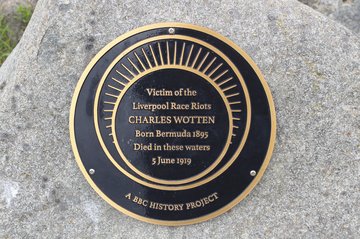
Race Riots, 1919
‐
Series of riots, primarily in port cities, in the aftermath of the First World War
Place of event
London, Glasgow, Liverpool, Cardiff, Salford, Hull, South Shields, Newport, Barry.
About
In the wake of the First World War and demobilization, the surplus of labour led to dissatisfaction among Britain’s workers, in particular seamen. This was arguably the key factor that led to the outbreak of rioting between white and minority workers in Britain’s major seaports, from January to August 1919. Along with African, Afro-Caribbean, Chinese and Arab sailors, South Asians were targeted because of the highly competitive nature of the job market and the perception that these minorities were ‘stealing’ the jobs that should belong to white indigenous British workers. The housing shortage arising from a lack of materials and labour during the war exacerbated the situation. The issue of ‘aliens’ taking jobs and houses from white workers was raised in the House of Commons. Further, as Indian seamen were paid at a considerably lower rate than their white counterparts and had to tolerate much poorer working and living conditions, they were blamed by unions for undercutting the wages of white workers. Of course, racism, and specifically the fear of miscegenation, also motivated the hostility towards these settlers.
During the months of racially motivated violence in 1919, there were violent attacks on minority workers, resulting in five fatalities, as well as vandalization of their homes and properties. South Asians suffered somewhat less than Black or Chinese workers as they were not regarded as such direct competition for jobs and housing; most remained within the navy and within their subsidized accommodation rather than seeking alternative employment and accommodation. However, a number of incidents involving South Asians have been traced. In May 1919 the Strangers’ Home for Asiatic Seamen in West India Dock Road was surrounded by a hostile crowd and ‘any coloured man who appeared was greeted with abuse and had to be escorted by the police. It was necessary at times to bar the doors of the Home’ (The Times, 30 May 1919). Newspapers of the time also report the devastation of a Malay boarding-house and the shop of one Abdul Satar in Cardiff (Visram, p. 199).
Evans, Neil, ‘The South Wales Race Riots of 1919’, Llafur 3 (1980), pp. 5–29
Jenkinson, Jacqueline, Black 1919: Riots, Racism and Resistance in Imperial Britain (Liverpool: Liverpool University Press, 2009)
May, Roy and Cohen, Robin, ‘The Interaction between Race and Colonialism: A Case Study of the Liverpool Race Riots of 1919’, Race and Class 16.2 (1974), pp. 111–26
Visram, Rozina, Asians in Britain: 400 Years of History (London: Pluto Press, 2002)
Local newspapers held at local libraries or at the British Library Newspaper Collection, St Pancras
For image and copyright details, please click "More Information" in the Viewer.
Image credit
Close-up of the plaque to Charles Wotten at Queens Dock, Liverpool
Photo by Phil Nash via Wikimedia Commons, CC BY-SA 4.0
